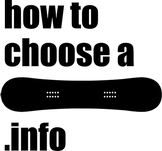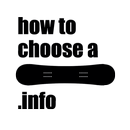Snowboard TYPES (by style, terrain and snow conditions)
Most snowboards use the tipical 2 strap bindings and "soft" boots (not ski like ones), those are the snowboards we know as "Snowboards", and maybe the only snowboards you know about. Then we have the split-boards, with different bindings, and the alpine racing boards, with different bindings and different boots.
Snowboard types - what are they?
Snowboard brands try to facilitate the choice of a snowboard to any one who does not know all the physics and math of snowboarding and snowboards (most of us), by letting us know for which riding style was a snowboard made / where will the snowboard perform best. That's usully done in one word and we call it the snowboard type. Because there are different styles and terrains, there are different snowboard types.
How usefull are the snowboard types when choosing a snowboard?
Pretty useful, like a color code, snowboard types will let you narrow down options at a glance with very few effort.
Snowboard types for beginners This is where your quest ends, unless you are very curious or have a lot of free time to burn. If you've got your width and size, just get a begginers board or choose a snowboard type that appeals to you and you're all ready. If in doubt we suggest you to go with all-mountain because it's easier to control in your regular direction (riding forward, not switch).
Snowboard types for beginners This is where your quest ends, unless you are very curious or have a lot of free time to burn. If you've got your width and size, just get a begginers board or choose a snowboard type that appeals to you and you're all ready. If in doubt we suggest you to go with all-mountain because it's easier to control in your regular direction (riding forward, not switch).
Snowboard types for advanced snowboarders You can't make the most accurate decision when choosing a snowboard just by the indication of where it will perform best if you're an advanced snowboarder, so for you the snowboard type isn't enough. Even though the snowboard type will give you an idea of how the snowboard will ride, you'll need to check the boards specs. to really know. Base, profile, flex, shape... What the type of snowboard can help you with is narrowing down your options, as a guideline.
Snowboard Types (for regular bindings and soft boots)
Beginners snowboard type
Fast and affordable way to start snowboarding. A beginners snowboard won't last forever, but you won't want to ride it forever either. Typically short, narrow, soft, slightly directional snowboards made with cheaper materials and a simple construction, beginners snowboards are cheaper and take very few or nothing at all from your snowboarding learning experience when compared to other snowboard types. Want a beginners snowboard with better quality? Look for jib/freestyle snowboards.
Jib / Street snowboard type
Snowboards that are great for jibing are typically short, narrow, soft, twin snowboards with deeper sidecuts, allowing for easy and fast maneuvering. This type of snowboards are shorter than beginners snowboards, with a better construction for more resistance and durability. Some jib/street snowboards come with detuned edges to keep your edges from "biting" the rails and you from eating snow.
Park / Freestyle snowboard type
Kind of the all-mountain for the snowpark and flatter slopes! A snowboard type that performs well in jibing, flat tricks and jumps, easy to maneuver and to rotate with and stable enough to get some decent speed. On the smaller and softer side, with twin / twin like shapes.
All-mountain freestyle snowboard type
Something in between a freestyle snowboard and a all-mountain snowboard.
All-mountain snowboard type
Snowboards that perform well in every terrain and snow conditions, loved by casual intermediate snowboarders that'll ride a bit of every type of terrain and all the snow conditions and want more from their snowboard but don't spend enough days in the mountains to justify a quiver. Higher end all-mountain snowboards tend to have powder inserts to make them ready for the deeper stuff and add to the "all-mountainness" of it.
All-mountain freeride snowboard type
Something in between a all-mountain snowboard and a freestyle snowboard.
Backcountry / Powder / Freeride snowboard type
To surf the fresh goodness on the best days, but also for any other snow conditions and for the steeper/faster groomers. This type of snowboards are buoyant and stable, they usually come in bigger sizes and variable widths, with stiffer flexibilities, directional shapes, progressive sidecuts and a noticeable taper. Made to ride steep and fast (because that's necessary when riding powder), freeride snowboards will feel heavy in flatter terrain and at slower speeds.
Short Powder snowboard type / Volume shift snowboard type
Short and wide, this type of snowboards are less stable at speed but very floatable (virtually unsinkable) and effortlessly maneuverable, that's what makes them super fun and easy going in slush and powder, specially on tree runs. They tend to have huge noses and practically no tail, super directional, but still able to ride switch in slopes. The typical snowboard size charts do not apply to this snowboard type, as the length of this types of snowboards will vary with the width, which changes with each model.
Custom snowboards
Made for you with the specs you choose or the manufacturer recomends you. For the ones who really know what they want and can't find it in the production models or just want some more exclusivity, this "type of snowboard" is the way to go.
Asymmetrical snowboards
On any of the above snowboard types, but usually on all-mountain and freeride snowboards, you can find an asymmetrical shape. The asymmetrical shape is also referred to as a snowboard type. Any snowboard called asymmetrical can have an asymmetrical flexibility too and probably does.
Other snowboard types
Split-boards Powder boards that split in 2 and can be used as snowboard or as skis to climb, walk and slightly descend. They have different bindings so they sit here with the racing boards.
Alpine Racing snowboards Made strictly for high speed carving on groomed terrain. This ones use different bindings and different boots, hard boots, similar to ski ones.
Cheap snowboards
Buying a cheap snowboard requires more atention from your part. You need to know better where you can compromise to get the same bang for less buck, now that you've already found us that's an easier task. To find a cheap snowboard that get's it done:
- Know what is it that you MUST have on your snowboard (like traditional camber, or medium flexibiity, or something else that for some reason you really want).
- Check out more than one store to get more to choose from. Here are a few online shops were you you can usualy find good deals.

